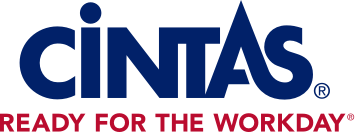From entry to excellence: Gowning procedures that safeguard your standards
Even a small oversight in gowning – a torn garment, a strand of loose hair, can have major consequences for controlled manufacturing operations. The potential for contamination events, production shutdowns, and regulatory scrutiny makes gowning far more than a routine step. Yet, at some organizations, the rigor of training and execution doesn't always match the stakes.
Effective gowning procedures act as the essential barrier that prevents contaminants from compromising your controlled environment and the sensitive processes within it. Executed properly, they are the foundation for product quality, regulatory compliance, and operational excellence.
Every step has a purpose
Donning cleanroom attire isn't like getting dressed for your day—it's precise and sequential, designed to prevent shedding of particles and microorganisms into the pristine environment. It's a proven approach that follows fundamental contamination control principles regardless of cleanroom classification.
Core gowning principles
The process starts before any protective garment is even touched.
Personal readiness: Good personal hygiene forms the foundation – this includes showering, wearing clean street clothes, and avoiding cosmetics, perfumes, and excessive jewelry. Personnel should be free of open wounds, rashes, or communicable illnesses.
Clear transition zones: Gowning always takes place in dedicated ante-rooms that serve as transition zones between the outside world and the cleanroom, with clear demarcation between "dirty" and "clean" areas.
Clean-to-dirty methodology: Always work from the cleanest part of any garment (inside) to areas that may contact potentially contaminated surfaces. Progress systematically from top to bottom.
The five pillars of effective gowning
Effective gowning procedures demand five critical elements working together:
1. Comprehensive training
Training needs to go beyond memorizing steps. Personnel need to understand why each step exists and what happens when contamination occurs. The stricter your cleanroom requirements, the more precise your gowning technique must be.
2. Properly designed gowning areas
Donning and doffing require dedicated spaces with logical flow patterns:
- Dirty side: For removing street clothes and personal belongings
- Clean side: For donning protective garments
- Clear demarcation: Physical barriers like benches that prevent cross-contamination
- Adequate space: Room for each step without rushing or compromising technique
3. Environment-specific garment selection
Your garment requirements depend on your cleanroom classification and what you're protecting. A basic manufacturing floor needs different protection than a sterile pharmaceutical environment. Match your garments to your actual contamination risks.
4. Methodical donning procedures
The gowning sequence follows a proven approach designed to minimize contamination risk:
- Cross the line of demarcation properly—never allow street shoes or clothes to touch the clean side
- Remove all personal items including watches, rings (beyond a plain wedding band in some cases), earrings, necklaces, phones, and wallets
Second, progressive garment donning:
- Head coverage first: Secure hairnet or bouffant cap over entire head, ensuring complete hair containment including bangs and sideburns. Men with beards require beard covers worn over facial hair and tucked under the hairnet
- Respiratory protection: Apply face masks to cover nose and mouth completely with snug fit, molding the nose piece properly
- Body protection: Carefully remove cleanroom suits or coveralls from packaging without touching the outside, unfold without floor contact, and don one step at a time—one leg, then the other, then arms, ensuring snug cuffs and ankles
- Hand protection: Apply gloves with proper technique, potentially in multiple layers depending on requirements
- Hoods (for higher classifications): Place hoods to cover all hair, ears, and neck, tucking bottom with bottom edges securely tucked into coverall collars
- Eyewear: Put on protective goggles with a snug, comfortable fit to minimize gaps and maintain particle control
- Shoe covers or boots: As the final step, don shoe covers or boots, making sure they seal completely over street shoes
Quality verification:
- Visual inspection: no exposed skin or hair, all fasteners closed, gloves intact and properly sealed, proper fit without binding
5. Proper doffing
Doffing is just as critical as donning. The removal process contains accumulated particles by turning garments inside out, working from outer layers to inner layers, and disposing of items in designated receptacles according to facility protocols.
Making it work in practice
The best procedures mean nothing without proper execution. This requires four key things:
- Clear written procedures tailored to your specific facility and cleanroom classification
- Regular skill verification to ensure techniques stay consistent
- Ongoing observation and coaching to maintain standards
- Continuous updates based on operational changes and lessons learned
Remember, your facility will have detailed Standard Operating Procedures based on your cleanroom class and specific operations. Those requirements always take precedence over general guidelines.
Where consistency pays off
Your gowning procedures set the tone for everything that follows in your controlled environment. When people execute these procedures with care and precision, they're establishing the standard of excellence that carries through every operation. Get this right, and you build a foundation for consistent, reliable performance—every single day.
Explore our cleanroom gowning solutions and learn more about cleanroom gowning best practices.
